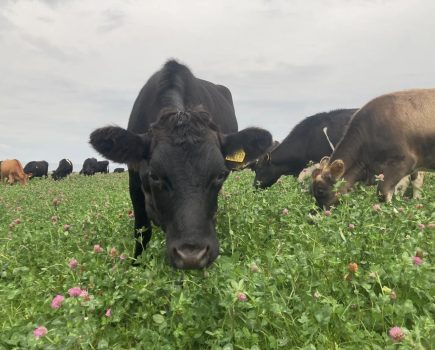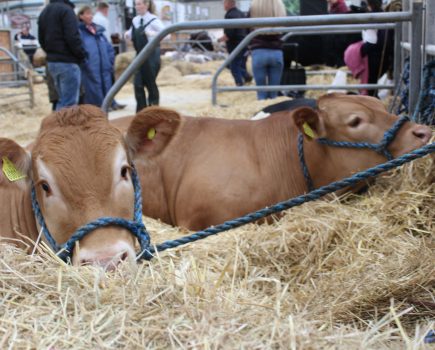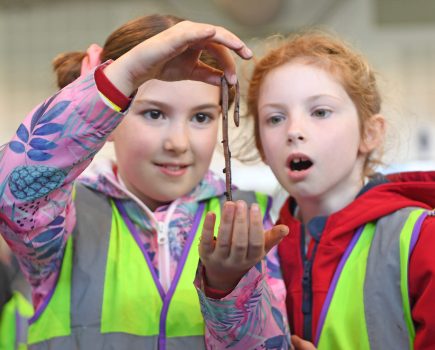Anna Chambers would like to encourage people to look after bees in their garden, no matter how small it is (and not just honeybees)
Although the estate where I work as gardener and beekeeper measures a respectable 80 acres, the suburban terrestrial handkerchief where I live can be better measured by numbers of paving slabs. For many people, gardens are getting smaller and neighbours closer. Land is sold off and built on with little thought for the wildlife living there. Although many people are interested in nature, there are always reasons why they cannot interact with it. To those people who say “no bees in my garden!” I offer the challenge: “why not?” The replies come flooding in – my garden’s too small, I have small children/grandchildren, I’m allergic to stings, and so on.In wartime Britain the tiniest back yard raised its own food and, today, I know of would-be smallholders, confined to London city living, that have turned from convention to house ducks and vegetables at the bottom of their gardens. But where is the line drawn between one type of livestock and another? They are happy to provide shelter for ducks in their small back garden, but would they be quite so happy to provide a home for bees? The parody is that they want their crops to be pollinated, but refuse to entertain the idea of keeping bees. The notion of bees as troublemakers is so firmly set in our minds that we seem to have completely forgotten their value. In a way, beekeepers have acted as curator, provider and doctor to bees, moulding them to become dependent on our help and goodwill for their very existence. At the same time others turn their backs on them. It is vitally important that people recognise the benefits of bees and pay more attention to them, for without bees there would be no crops, and without crops no sustenance.
Where do bees come from?In the spring and summer, when forage is at its height, smallholders and city gardeners alike grow fruit and vegetables in their bid for self-sustenance and well being. Yet what would happen to the humble runner bean without bees? How many of us have sprayed the bright red flowers with a solution of sugar water to attract bees to pollinate our crops, and how many have stopped to think where these crucial bees come from?Bees travel miles to forage if a particular supply is in season, and in gardens and city parks, there is something in season all year round. On a still, clear winter’s day, towns and cities can be several degrees warmer than the surrounding countryside. The snow melts earlier and flowers bloom for longer. This balmy city-winter encourages earlier journeys out of the hive or nest and the bees are rewarded in the parks and smallest of suburban gardens with winter flowering (and incidentally wonderfully fragranced) mahonias, Christmas box and Daphne – plants that are much less seen in the wilds of the arable countryside. Soon to follow are the early crocuses that city councils fill their beds with – a lifeline for the bees, and an early bonus for the suburban beekeeper.The answer to the question “where do bees come from?” is “they’re all around us”. Yet despite the bountiful forage in the more urban parts of this country, the numbers of bees here are declining as their natural nesting sites disappear and we rebuff these persecuted refugees.
Legally speakingPerhaps I am preaching to the converted and you all want bees in your garden but are afraid of your neighbours’ reactions. Although there are no laws saying you can’t keep bees in your garden, there are laws referring to a person’s enjoyment of their own property. If your neighbour cites your bees as detrimental to his/her enjoyment of the garden, then you may quickly find yourself at odds with both your neighbour and the council. It is better to avoid this situation to begin with. Above all, common sense should prevail.So the belief is set that, despite the wealth of plants available in them, gardens, whatever their size, are becoming too small for bees – more as a result of people’s prejudices than the size of the gardens. However, with a minimum of effort there are ways of keeping bees in the garden – and your neighbours need never find out…
Secret beesThe best known approach to beekeeping is of course the traditional, proactive, hands-on one where beehives are kept for personal benefit – for crop pollination, for honey and for other hive products. This approach, whilst thoroughly enjoyable and obsessive, is the one most likely to cause offence with your neighbours if undertaken carelessly, and take up most of your spare time and money.Another approach is a collaborative one, keeping the bees for their benefit as well as the benefit of the plants in your garden. Less bee ‘keeping’, more bee ‘inviting’, I suppose. This approach will generally go unnoticed and unquestioned by neighbours and, unaware, they will reap the rewards in the form of a bumper harvest. I always find the excuse “mine’s a wildlife garden” works wonders. Once upon a time untidy gardens were seen as the sign of a lazy gardener, a couch potato with little interest in the outdoors. These days the wild garden has something of a contemporary chic about it, associating the owner with all the virtues of an experienced environmentalist. Natural nesting sites include an unmown grassy hummock and a forgotten pile of wood – anything, in fact, that you wouldn’t find in a perfectly manicured garden and a great excuse to put down your garden tools.A man-made bumblebee nesting box can be hidden away in a corner under a shrub and solitary bee tubes positioned on a wall. Now you just need to encourage bees into your garden through the range of plants you grow and hey presto! Bees in your garden – a source of entertainment and an invaluable lesson for children, grandchildren and adults alike. Open cup shaped flowers are the bees’ favourites including the many forms of the quaint old English campanulas, or bell flowers, foxgloves and hollyhocks are also desirable, and the most lazy of forage is available in the form of sedum, the ice plant, which offers a bumper plateful of early autumn forage – masses of tiny flowers in one enormous head that bees can wander across with minimal effort.As for the fear of being stung, we are conned into thinking that bees will attack for no reason. Bees don’t set out to sting when they leave the nest – honeybees are aggressive when trying to protect their precious stores of honey in the hive, but not when they’re out alone foraging on flowers. I have handled bumblebee nests and closely observed solitary bee nests with no aggression from my subjects.
Recycled refugeesStill not convinced? Then why not try an ornamental beehive-shaped compost bin (or any shaped compost bin, but I find the look of the ornamental ones rather pleasing and they give the impression of owning a beehive where a beehive would not normally be suitable). This way you will be doing your bit to recycle and save the environment, and you will furnish yourself with a renewable source of rich compost. The improvements to your soil will give you better crops and provide fresh earth for the tiny Red Mason bee’s mud nest. She, in turn, will thank you by pollinating your crops. Bumblebees will enjoy the warmth of the rotting compost as a nesting site, and they too will pollinate freely. With this small gesture some of our persecuted refugees can at last settle into a new home.An untidy corner, artificial nesting sites, bee-friendly plants and a compost bin – there’s always room to encourage bees into the garden. With the exception perhaps of the top of a high-rise city block (and no doubt there are tales to contradict this exception), even the tiniest of window boxes can provide forage and a bee nesting tube can be attached undetected.Being something of a nosey parker, when I walk my local suburban footpaths, criss-crossing back streets and alleyways, I often glimpse into other people’s gardens. Some are immaculate and showy, others ignored and overgrown. In most of them there is colour year round as some gardeners attempt to brighten up their own terrestrial handkerchiefs whilst others allow the floriferous weeds to grow. It is this continual abundance of forage that makes our gardens so attractive and important to our bees – little creatures that should not be shunned. From a beehive to a solitary bee tube on the wall, from herbaceous borders to floral window boxes – no garden is ever too small for bees.
This article is from the February 2005 issue of Country Smallholding magazine. << To order back issues click the link to the left.







